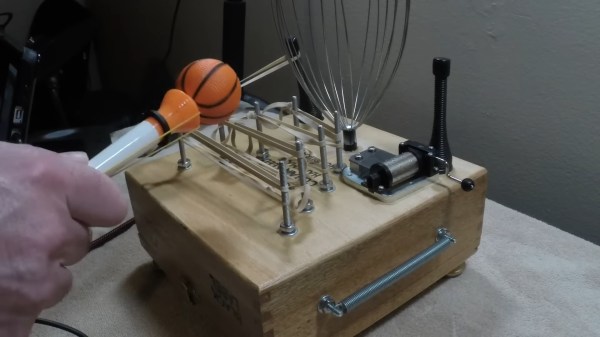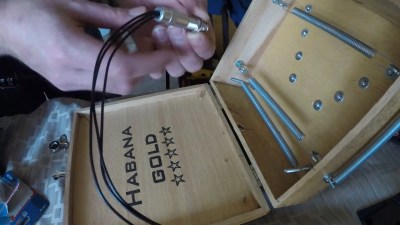A piezo disk transducer is a handy part for reproducing beeps and boops, and can also function as a rudimentary microphone. Being a piezoelectric element, it can also generate usable power. Enough to run a radio transmitter? [b.kainka] is here to find out, with what may be the simplest possible transmitter circuit.
The active element in the circuit, such as it is, comes from a crystal. This functions as an extremely stable and high Q tuned circuit. When excited by a pulse of electricity, the circuit will carry oscillations in a similar manner to a bell ringing until the pulse is exhausted. A small lever fashioned from a piece of wire supplies the voltage by flexing the piezo disk and a contact, a diode discharges the reverse voltage as the disk returns to shape, and a small capacitor provides an AC path to ground. It works, if a small pulse of very low-power RF near the crystal’s frequency can be described as working.
It may not be the most practical transmitter, but it’s certainly something we’ve not seen before. It’s part of our 2025 Component Abuse Challenge, for which you still have time to make an entry yourself if you have one.


















